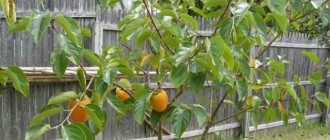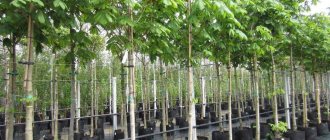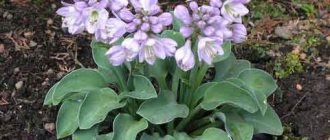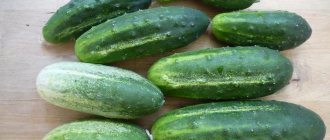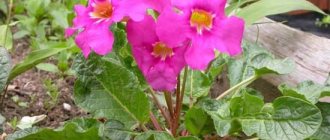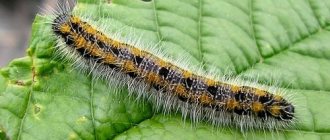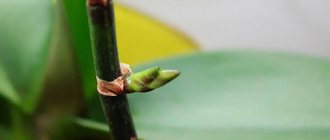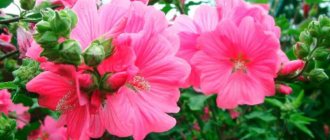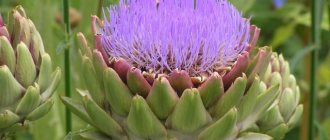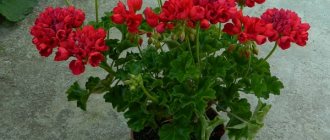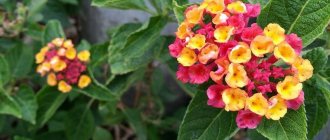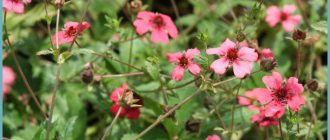Cultivation
Unpretentious gray fescue, planting and caring for which will not cause difficulties, requires compliance with only one condition - a sunny area. The plant is tolerant of lack of moisture, so it can be planted in rocky gardens and other areas exposed to the sun during hot summers. Partial shade and shade negatively affect the condition of the crop, as well as its decorative properties. Fescue in the shade loses its bluish tint, which is its feature.
The plant can be planted in any type of soil, but loose soil enriched with oxygen is preferable. It feels great in rocky soil, but excess moisture can negatively affect the appearance of the plant.
This universal ornamental plant is unpretentious to climatic conditions and can grow favorably in places with harsh climates. There is no need to cover the crop for the winter - fescue tolerates frosty winters well.
Fescue is a perennial crop that grows in one place for 2-3 years; after this period, the bush may lose its decorative properties. Therefore, it is recommended to replant the plant to a new location, first dividing the bush into several parts. Young divisions take root well and already in the first year reach the size of an adult plant.
How to care for fescue trees
Caring for fescue trees is extremely easy and simple - even a beginner can cope with growing plants. The only disadvantage of these plants is their rapid growth; literally after 2-3 years the dense center thins out, dividing and rejuvenating the perennials is required.
Fescue winters well; even in snowless winters, the rhizomes do not freeze. After wintering, it is necessary to clear the bush of dried leaves, lightly loosen the soil and occasionally do not water the bushes abundantly.
Perennial fescue does not require fertilizing, but if the plant has been grown in one place for many years, the depleted soil can be fed with mineral fertilizers.
Features of care
Fescue can be considered a garden crop for the lazy. Its cultivation in the garden does not require much work. In order to provide a plant with a “decent life”, it is enough to follow three rules:
- Correct choice of landing site;
- Compliance with soil selection conditions;
- Renew the bush every three years.
If you mulch the roots of the plant with small decorative stones or pebbles, you can simplify care. Weeds will not break through the stone mulch, and at night, due to the condensation under it, the plant will be naturally watered, while during the day such a protective layer will not allow the soil to dry out at the roots.
The decorative effect of the bushes in the spring is provided by “combing” with a rake. This procedure allows you to get rid of dead leaves and spikelets.
Planting methods
All fescue trees grow happily in well-lit areas. In the hottest, sun-dry areas they feel great. This feature is used in the design of the southern and eastern slopes of alpine slides. But they are poorly adapted to the shade and lose their exquisite coloring.
When choosing a place for planting, it is important to consider that the plant does not like piercing winds and drafts.
Fescue is also unusual in that it does not require fertile soil. Loose soil with good breathability that dries quickly after rain is most suitable for the plant. To prevent stagnation of water, which is detrimental to the roots, it is often necessary to lay a drainage layer in the planting areas. Clay areas are easily structured by adding sand and rotted compost, but not more than 3 liters of mixture per square meter.
Preparing a site for planting fescue consists of digging up the soil and removing weeds.
Planting by seeds
When growing species forms, one of three options is used:
- direct sowing in open ground;
- seedling method;
- self-seeding transplant.
All options are equally good; seedlings easily take root in place, but with direct sowing, seedlings appear earlier.
Growing varietal fescue from seeds, if they are collected independently, is not recommended, since the plant loses the qualities inherent in the variety, including resistance to frost.
Sowing seeds in open ground is carried out with the onset of consistently warm weather in the spring or shortly before the onset of cold weather in the fall according to the following algorithm.
- Self-collected seeds are pickled in a solution of potassium permanganate. Those purchased from a specialized store do not require additional processing.
- Holes for sowing seeds are dug 5 cm deep, the distance between them is at least 10 cm.
- Several seeds are placed in each hole (the lush shape of the bushes will form earlier with such sowing).
- The seeds are covered with earth, compacted, and watered.
Sprouts appear after 2-3 weeks.
Seedlings are grown from the beginning of May using the following method.
- The substrate for seed germination is selected to be light, with good moisture and air permeability.
- The seeds are laid out on the surface of the soil mixture and sprayed with water from a spray bottle.
- The seedling container is covered with film and placed in a warm place with good lighting. In a greenhouse, seeds germinate in a few days.
- When shoots appear, the container is transferred to a cool windowsill. At a lower temperature, the seedlings will not stretch out and lie on the ground.
- After the formation of two true leaves, the seedlings dive. For growing, several of them are placed in separate containers.
In the first half of May, seedlings are planted in a permanent place in the garden. The landing pattern can be any:
- dotted line - at a distance of half a meter between copies;
- linearly (for decorating borders) or as a continuous carpet - with an interval of 15-20 cm.
The utmost care is taken when moistening seedlings: excess moisture, even the slightest, leads to rotting of the root system.
Vegetative method
Vegetative propagation of gray fescue is practiced for varietal plants. It is combined with transplanting or dividing overgrown bushes.
The optimal timing is early spring, before sap flow begins, or autumn, when the plant is preparing for the winter dormant period.
Procedure for dividing a bush in spring:
- dig up heavily overgrown bushes or bushes intended for replanting;
- Using a sharp knife, carefully divide them into parts, trying to minimally disturb the earthen lump;
- the cuttings are planted in designated places;
- the middle part of the bush, which disrupts the decorativeness of the plantings, is removed and no longer used.
The optimal age of fescue intended for division is at least two years.
If vegetative propagation is scheduled for autumn, a different algorithm is used to preserve the winter hardiness of fescue.
- The mother bush is dug up with a lump of earth.
- Place it in a container and winter it in a cold place (2-5°C) with good lighting and low humidity - a cold veranda, a greenhouse empty in winter, etc.
- At the end of winter or beginning of spring, the bush is divided, the divisions are placed in containers with a substrate (garden soil, humus and sand in equal parts).
The cuttings are planted in open ground in late May - early June.
With any planting method, it is preferable to plant several fescue specimens in one hole - this way the young plants will not “get lost” next to their neighbors.
Fescue propagation
Unpretentious fescue is a universal crop. Gardeners fell in love with the ease of cultivation. Plant propagation is possible in three ways:
The easiest way to propagate a crop is division . Mandatory renewal of the bush allows you to obtain fescue seedlings. To do this, dig up a bush with a lump of earth. Using a knife, divide the bush into several parts, while maintaining a lump on the rhizome. The central part of the plant cannot be replanted. Lateral shoots are new seedlings for planting.
Bushes are planted in open ground at a distance of 20 centimeters from each other if they want to get a continuous border or carpet. If the desired result is isolated bushes, then it is worth planting at a distance of 50 centimeters.
Seedlings can be harvested in autumn or early spring. Autumn cuttings are placed in boxes with soil and provided with above-zero temperatures; the main condition is good lighting in the room. In spring, seedlings are planted in open ground in a permanent place. Spring divisions are planted immediately after division. You can divide the bushes throughout the summer. On hot days, it is recommended to water the transplanted plants abundantly.
Fescue can be grown from seeds . Large seeds are planted in early spring directly into the ground. Planting is carried out after the earth warms up - March, April. Seeds are planted in holes of 1-2 pieces. Planting depth - 3 centimeters. After the plants emerge, the area must be weeded to remove weeds. Watering is possible, but you should make sure that the soil does not become covered with a hard crust. Loosening can be carried out only after the formation of a small bush, so as not to disturb the weak young root system. The plant develops quite quickly, so by the fall mature plants are obtained.
Requirements for growing conditions
All fescue trees are sun-loving species. Warm sunny areas with good lighting are considered the most favorable for them, so they can be located on the south side of a building or rock garden. Partial shade and drafts can become an obstacle when growing a plant that will not be able to show its unusual colors and textures in all its glory.
Fescue is not demanding on the soil when planting and caring for it. It requires a light texture, looseness and absence of moisture stagnation. No nutritious soil is needed for fescue; the best option is dry, rocky soil with good drainage.
Almost all types of plants have high frost resistance, allowing them to tolerate winters well. After planting for 2 or 3 years, clumps are prone to degeneration, which begins from the center of the hummock. Therefore, periodic renewal is necessary - re-planting with seeds or dividing the bushes.
In order for growing fescue from seeds to be successful, when purchasing, it is important to choose species that are acclimatized to the conditions of the area.
Dense dense clumps-spheres of fescue with narrow leaves are one of the most popular crops among ornamental grasses. When sowing sunny areas of flower beds with this plant, you can get a beautiful, spectacular garden design that does not require complex care.
Best views
The plant has about a dozen ornamental varieties. They differ from each other in the color of the foliage and the type of peduncles. The most spectacular varieties of culture:
- Blue fescue is the most popular type of crop. It differs in the color of the leaves - they have a blue tint. An adult bush has the shape of a sphere. Thin needle leaves are able to hold their shape even when the wind blows. During flowering, the plant produces panicle inflorescences on a thin peduncle. Depending on the variety, the size of the plant can vary from 10 to 40 centimeters in height and up to 50 centimeters in diameter.
- Myra - this variety has a natural herbal color. Green “domes” of bushes look organic in rock gardens and among the stones of an alpine hill.
- Red meadow fescue is a type of lawn grass. In nature it grows in meadows. It is used in garden design thanks to its bright spikelets-panicles, which combine effectively with the fluffy greenery of the leaves. Can reach 60 centimeters in height, used on lawns. Withstands haircuts very well.
- Filamentous fescue has thin green leaves. Looks ideal in flower beds. Designers use culture to restore color balance in compositions.
- Glacial fescue-titmouse, grown from seeds under natural conditions. For decorative use, it is recommended to plant them in the ground with bushes. The spikelets are purple inflorescences that contrast with the dark green foliage.
- Fescue is a grass characterized by dense bristles of shoots. Propagates by self-sowing. The rhizomes have a mesh structure and are able to penetrate the soil, securely fastening even to stones. Often used in landscape design. During the flowering period, dark green grass throws out gray voluminous panicles.
- Tall fescue is typically used as turf. It has a developed root system. It does not fade in the sun and is not trampled, maintaining its appearance for a long time.
All types of culture are successfully used by designers due to their decorative properties. Some of them are resistant to mechanical stress: trampling, cutting.
Popular varieties
Blue fescue has many varietal forms, which differ from each other in general morphological characteristics: volume and color of the crown, height.
High varieties have long gained popularity in the field of landscape design. They are valued by gardeners for their exquisite appearance and high decorative qualities, which the plant retains throughout the spring-summer season.
Low-growing representatives of the genus are actively used as ground cover ornamental crops. The more bushes are planted in one area, the more impressive the green carpet looks. The perennial copes with its task without difficulty.
“Fluffy hummocks” can also perform useful functions: as they grow, they prevent the soil from drying out and weeds from germinating.
The color palette of varietal forms of the plant is quite diverse: the fescue crown can have a soft blue or deep blue color, as well as a silver and metallic tint.
The most popular varieties of blue fescue are:
- Glacial tit - growing from seeds will not cause trouble even for novice gardeners. And the flower is capable of independently performing this task - it grows greatly due to almost uncontrolled and active self-seeding. A low perennial with a blue-gray herbaceous crown looks like lush, semicircular hummocks 30-40 centimeters high. The foliage has a steel, blue color or green with a gray coating. Gray-green flowers form soft inflorescences-panicles; after the end of flowering they acquire a light brown color. For an intense and rich crown color, it is recommended to replant the bush every two years.
- Festuca cinerea is a herbaceous perennial that is very popular among gardeners. Straight stems and blue-green leaves form a small rounded bush - 30-50 centimeters in height.
- Tenuifolia - distinguished by thin and short leaves, looks very impressive among stones, therefore it is actively used to create alpine slides and decorate artificial reservoirs. Until late autumn it pleases with silvery-gray flowers that form branched inflorescences in the form of panicles.
All varietal forms of blue bunting are incredibly beautiful due to their simplicity: thick and long modified leaves form voluminous “balls”, from which rare paniculate inflorescences peek out during flowering.
It looks impressive and cute, especially if brighter flowers grow nearby. The bluish shade of the crown is interesting because of its rarity among similar plants. The bluish tint favorably sets off green and flowering plantings. It is impossible to refuse the attractive gray fescue. Planting and caring for it are quite simple, which again makes the perennial flower a welcome guest in the garden plots of “lazy” gardeners.
Application in landscape design
The unusual spherical shape of the bushes and the bluish tint make it possible to use the crop to decorate the most daring projects. And the use of grass as an element of a rock garden, rock garden or flower garden is a real godsend for the designer.
The almost even circles that form the bushes allow you to form geometric shapes from the grass, such as lines, circles and semicircles. Fescue is used for zoning a flower bed, edging it and highlighting groups of plants.
The plant combines with wildflowers or brightly colored ornamental crops. Bushes can complement a composition of plants, stones, gabions, or become part of the design of an artificial pond. Fescue is also used as a dominant plant, for example, in the center of a decorative stone flowerbed.
Growing gray fescue from seeds
As stated above, there are many varieties of fescue, but blue fescue is one of the most popular. It is worth noting that the plant can be grown both in the shade and in the sun. As practice shows, it is absolutely unpretentious, so there is no need to constantly nourish the soil, and fescue grows well on dry soils.
Often, the plant is grown from seeds that are medium in size. They are placed directly in open ground. Planting must be done between April and May. In addition, it can also be planted in late autumn.
Rules for successful fescue planting:
- In order to plant the seeds of a plant, you need to make some kind of nests, put four seeds in each of them. This planting method is quite good, as it allows you to form a decorative hummock. It is worth noting that the gap between the hummocks should be from 15 to 20 cm.
- After the seeds are planted, they need to be sprinkled with soil and watered thoroughly.
- In just 2 weeks the first shoots will appear. If the sun hits the fescue and it is in dry and warm soil, then it will delight with its beauty much earlier. If the soil is excessively wet or there is standing water in it, the plant may begin to rot.
Types of fescue with photos and names
More than 660 species of fescue are found in nature. However, gardeners cultivate approximately 20 species in open ground.
Meadow fescue (Festuca pratensis)
On one bush of such a herbaceous perennial plant there are both lodging and upright growing shoots. The turf can reach a height of 0.5 to 1 meter. The bush is decorated with lush light green or rich green foliage, which has a linear shape and is about 0.3 m long. Flowering is observed in June, with paniculate inflorescences reaching from 15 to 17 centimeters in length. They consist of elongated spikelets located on flexible peduncles. This species is highly frost-resistant, but it does not tolerate prolonged drought.
Red fescue (Festuca rubra)
The turf consists of bare shoots, the height of which varies from 60 to 80 mm. There are also lateral pale red processes, characterized by high density. On the surface of the shoots there are thick, thin leaves, the length of which is from 0.3 to 0.4 m. The reddish-green leaf plates are folded along the midrib, and their surface is ribbed. The flowering bush is decorated with loose panicles, approximately 12 centimeters long. This winter-hardy plant grows best in moist or flooded soil.
Gray fescue (Festuca glauca)
The thick turf, shaped like a ball, looks very similar to a tussock, the height of which is from 0.5 to 0.6 m. It is decorated with lush bluish-blue or silver-green foliage of a narrow linear shape. The greenish-gray paniculate inflorescences are also distinguished by their splendor. Moreover, when they fade, they turn straw-colored. This heat-loving plant may die due to severe frosts.
The best varieties:
- blue hummock - a dense bush is decorated with a large number of narrow leaf plates of a bluish-green color;
- lapis lazuli - this variety stands out among the rest with its spectacular silver-blue foliage;
- glacial tit - the height of the bush is 0.3–0.4 m, it grows dense, narrow foliage of a grayish-blue hue.
Sheep fescue (Festuca ovina)
As the bush grows, it forms dense spherical cushions, the height of which does not exceed 0.2–0.3 m. They consist of long thin shoots and narrow leaf plates. The shoots have a rich green color. In June, loose paniculate inflorescences of an oblong shape, consisting of drooping spikelets, are formed. The plant is highly resistant to drought and grows well in infertile soil.
Tall fescue (Festuca arundinacea)
This perennial thrives in saline soil. Its rhizome is short, and its shoots are dense and reach a height of about one and a half meters. Narrow, hard leaf plates form at the base of the stems. The bush blooms in June–July. At this time, bare peduncles with drooping paniculate inflorescences, about 20 centimeters long, are formed on it.
Fescue Gautier (Festuca gautieri)
This evergreen plant is distinguished by its compactness: its height is up to 10 centimeters, and its diameter reaches about 60 centimeters. Its thread-like leaf blades are dark green. In the last days of June, paniculate greenish-gray inflorescences form on the bushes, the length of which can be from 5 to 7 centimeters.
Reviews and advice from gardeners
Most housewives who grow fescue from seeds say that it is not at all difficult, the main thing is to follow the following rules when growing:
- In order to get adult plants from seeds earlier, you must first plant them in a box and then transplant them into the soil. But the seeds take root well in open ground, they just germinate a little later.
- You should be careful when watering fescue; under no circumstances should you allow the soil to become waterlogged. It is very important to take into account the humidity level and weather conditions of the region.
- The plant tolerates winter very well; it does not even need to be covered if the soil is of average moisture.
- As for replanting perennials, this procedure must be performed every 3 years, so they will not get used to one area and die off.
- After winter, it is imperative to destroy dried leaves.
Flower care
If you choose a good place for fescue with suitable soil, then it will not require special care. However, when maintaining a flower, it is worth remembering that under no circumstances should the soil be allowed to become waterlogged. Stagnant water can cause rotting of the root system, which will lead to the death of the bush. You need to water the plant moderately, let there be less moisture than it should.
To completely avoid watering procedures, experienced gardeners recommend mulching the bed with festuka with small pebbles or special stones. This decor will not only decorate the flowerbed, but will also prevent weeds from getting through. In hot weather, it will prevent the active evaporation of moisture, and at night condensation will accumulate under it, which will replace watering.
To improve the health of flowers and keep them looking beautiful in the spring, you need to remove dried and frozen leaves. They are cut with sharp pruning shears or simply combed out of the bushes using a rake. Dried panicle inflorescences are also removed.
Festukas actively increase green mass for 2-3 years, after which the plants begin to degenerate. To rejuvenate the bushes, they need to be dug up, divided into several parts and planted. Already in the first year they will quickly grow and return the flowerbed to a decorative appearance.
Oversaturation of the soil with nutrients has a detrimental effect on the appearance of the flower. Therefore, you can feed oatmeal only if it has begun to grow poorly. For this purpose, mineral and organic fertilizers are used.
Subtleties of growing fescue "Glacier Tit"
- Glacial fescue "Sinichka", the cultivation of which is not a complicated process, is distinguished by its beauty and unpretentiousness. The favorable period for planting is May; it is during this month that the soil warms up completely.
- The seeds need to be sprinkled with a little soil, compacted, and then watered.
- In about 15-20 days the seeds will sprout. They must be thinned out and planted.
- It is important to maintain the distance between plants; it should be from 25 to 30 cm.
- In June, fescue blooms with a silvery color, thereby adding zest to the composition of the entire site.
- In order for this fescue variety to always have a rich color, it is recommended to replant it once every 2 years. If the year turns out to be cold, then the plant will not have a bright color.
Description and features of fescue
Fescue can play the role of a leader in a flower arrangement or be a good decorative background for brighter and more expressive flowers. It depends on the height of the plant. Some varieties reach 1.5 meters in length, there are medium varieties, and there are also dwarfs.
Various varieties of fescue and other plants can be purchased in our online store.
The popularity of fescue is explained by three factors:
- it is unusually hardy and can grow without watering;
- no need to spend money on fertilizers and protective equipment;
- the plant looks unusually beautiful and original in park and countryside compositions.
What are the features of growing this common plant?
Photo of the plant
Characteristics of gray fescue
Fescue is a cereal crop. The main places of growth are in temperate subtropical zones. But as an ornamental plant distributed throughout the globe, our country is no exception.
Used in landscape design, especially the gray fescue variety. This type is loved not only by professionals, but also by amateurs, because with its help you can create a magnificent oasis. Fescue got its name from the color of its leaves; there are two types: blue fescue and ash fescue. Its color changes depending on the weather, but its decorative properties remain at the same level.
The height of the bush varies from 20 to 60 cm. The leaves are narrow and have a twisted shape. This type allows the leaves to reduce fluid consumption. The evergreen plant looks like round bushes with a dense crown. The root system is abundant, but short.
You can grow a plant in one place for several years in a row. Fescue is an ideal plant for protecting the soil from weeds and drying out. Performing useful actions, fescue perfectly decorates the garden, because its beautiful decorative appearance remains throughout the entire summer season.
Important! Fescue has a huge variety of shapes and colors.
fescue
Fescue is perhaps one of the most common and beloved ornamental cereal grasses in Russian gardens. Most often you can find blue fescue
, or
sand-loving
(Festuca glauca) with very narrow leaves of a steel-blue color.
This plant forms charming blue hedgehogs in rock gardens, requiring almost no care. True, in our harsh Ural conditions, gray fescue is not hardy enough. Like Gerver's fescue
(F. herverii), which I still like better. This is a densely bushy plant with bluish-green leaves (herb height up to 20 cm), and reproduces poorly.
Valis fescue is a match for these spectacular plants.
, or
Fescue
(F. valesiaca) with needle-like leaves of a bluish or grayish-green color. It grows successfully even within the boundaries of Yekaterinburg, on the rocky slopes of the Uktus Mountains.
False Dalmatian fescue is very beautiful
(F. pseudodalmatica) with long, needle-like leaves of an intense green-gray color and spreading panicles on light pink stems.
But when arranging a garden, you don’t have to avoid the cute “hedgehogs” - fescue trees of pure green color, which look great on alpine hills, in group plantings. Blue and green fescue are widely used to decorate borders, draw contrasting lines when creating floral carpets.
According to the observations of gardeners, in our soil and climatic conditions the following types of fescue turned out to be the most resistant: - variegated fescue
(F. heterophylla) with narrow light green leaves and a spreading panicle drooping at the top;
— amethyst fescue
(F. amethystina) with green narrow leaves;
- rocky fescue
, or
furrowed fescue
(F. rupicola) with a wider leaf blade;
- bluish fescue
(F. cinerea) with a gray tint of narrow emerald leaves and a spreading light yellow panicle. Amethyst fescue and bluish fescue require neutral or slightly alkaline soil to grow in the garden.
All mountain fescue representatives that decorate our gardens are perennial densely bushy grasses with narrow leaves. In rock gardens they reach a height of only 10–20 cm provided there is a lack of moisture, as naturally occurs in nature.). And when they are placed in borders or carpet flower beds, on moister and humus-rich soil, the height of the fescue becomes much greater (up to 40 cm).
One of the most beautiful and rare fescue trees of the mountainous Urals is the graceful Igoshina fescue
(F. igoschiniae) 5–20 cm high. I regret that I did not collect its seeds at the time.
Gray fescue varieties
All varieties of the plant are not very different from each other and often have the same names. But the color of plants can be varied, from silver to blue with a strong metallic tint.
- The color of the leaves of the Mirblo variety is similar to the color of the sea green;
- Domling has a compact size, the height of the bushes does not exceed 15 cm;
- Fescue Lapis Lazuli has a distinctive feature - blue leaves with a bright metallic tint;
- Blue tussock fescue is a prominent representative of this grass, its height is about 50 cm and has a pleasant bluish tint;
- Glacier tit fescue is intended for cultivation in northern countries.
Blue tussock fescue
Important! Almost all plant varieties require identical care and are particular about the place of cultivation.
Blue fescue: planting and care
The first thing you need to start with when planting is to properly prepare the bed; you need to dig it quite deeply (to the bayonet of a shovel). If the soil is weakened, a mixture of natural fertilizers is introduced during digging:
There are two ways to grow a crop: direct planting directly in open ground and planting seedlings.
Gray fescue planting and care in open ground
Planting seed material on an open ridge is done using the nesting method. This method will help to form the correct form of culture without much difficulty. As a rule, plants are planted in April or May. But there are flower growers who practice autumn planting.
Gray fescue planting
Important! You need to remember that before you start sowing, the seeds must be kept for some time in a slightly pink solution of potassium permanganate.
Landing dates and rules
Just as fescue itself is unpretentious, so is the process of planting it. Compliance with simple conditions will ensure success in growing.
Gray fescue reproduces mainly by vegetative means; cultivation from seeds is also practiced.
Seed propagation
The seed propagation method is used for species varieties. In this case, the seeds:
- sow in the ground;
- planted on ;
- use plants obtained as a result of self-seeding.
Perennial seeds are collected independently from the largest spikelets, which must first be dried.
Important!
Fescue trees planted in the ground and grown in seedlings take root equally well, but the former will germinate somewhat faster.
If you decide to purchase seeds to plant funny “hedgehogs” in your garden, you should give preference to specialized retail outlets. The seed must be selected from those varieties that are acclimatized to the given area and have a certain level of frost resistance.
Important!
Only natural species can be propagated by seed.
Artificially bred fescue trees lose the characteristics of the variety with this method of propagation. If you neglect this rule, there is a risk of getting a plant that is not adapted to local conditions, which will freeze after the first winter.
Planting by seeds
It is carried out after the establishment of warm weather in the spring or before the onset of cold weather in the fall.
- Before planting, seeds that were collected independently should be pickled in a solution of potassium permanganate. If you purchased seed from a reputable seller, especially if there is an instruction on pre-treatment on the packaging, this is not necessary.
- You should plant 5-7 seeds in each hole so that they quickly form a lush tussock.
- The hole should not be too deep, maximum 5 centimeters.
- After planting the seeds in the ground, you need to cover them with soil mixture, compact them and water them.
- The interwell distance can be from 10 centimeters, depending on the desired result.
- After the first shoots appear, which will appear in a few weeks, semicircular lush hummocks will form very soon.
Planting seeds for seedlings
occurs in early March, so that in the first half of May, stronger and mature bushes can be planted.
- The substrate must be light, air and water permeable; When sowing seeds, do not sprinkle them, but moisten them with a spray bottle.
- Cover with cellophane or glass and place the container in a warm, bright place. This will allow the seedlings to hatch in a few days.
- To prevent the seedlings from becoming thin and dying, the container will need to be moved to a place where it is cooler, however, it should be light.
- After the formation of two true leaves, the seedlings are planted in groups into separate containers to obtain a lush bush.
- After the weather settles, most often this happens during the May holidays, the seedlings need to be planted in the ground.
Important!
You should be very careful when it comes to moisture: excess moisture will lead to rotting and death of the roots.
Vegetative
Most often, the vegetative method of propagation is used during transplantation and division of overgrown bushes. This should be done either in the spring before sap circulation begins, or in the fall, when the plants are preparing for winter.
- Bushes that have grown greatly and it is time to plant them should be divided into parts.
- The resulting divisions must be planted as independent plants.
- The core, which has become unusable and due to which the decorative appearance of the entire bush is disrupted, is removed without being used.
Important!
Adults, at least two years old, divide the bushes.
To give the plant additional winter hardiness, the mother bush should be dug up with a lump of earth, planted in a container and placed in a lighted but cold place, for example, a greenhouse. In this case, any dampness should be excluded in order to avoid the death of the bush.
At the beginning of spring, when the time comes to plant fescue, the clump should be divided, the divisions planted in containers in a mixture of soil and sand. They should be planted in the ground at the beginning of summer. Having undergone such hardening, they will be much stronger and will gain green mass faster.
Reproduction
The crop is propagated using seeds or vegetative parts. In order to collect seed material from a plant, it is necessary to leave several well-developed peduncles. After ripening, the panicles need to be cut off, dried well and the seeds removed.
Important! Plants of this type are best propagated vegetatively.
In order to propagate gray fescue, you need to dig up several good mother bushes and plant them in flower pots; dividing is best done in mid-October. During the winter season, it is best to keep plants in a dry basement or in a glass-enclosed greenhouse.
The bushes are divided only in mid-March. Plant in separate pots with soil mixture. As soon as it becomes warm outside and the threat of frost has passed, the plants can be planted in the prepared holes. The plant can be propagated in this way every 3-4 years.
Reproduction of fescue
Fescue trees are propagated mainly by vegetative methods. This plant is easiest to divide in early spring, by separating several small pieces of turf while rejuvenating old clumps and discarding the dry center.
Gray fescue, blue. © Gabriella
Also often used is the method of obtaining stronger cuttings from the mother plant, which are transferred to pots for the winter and kept in cold temperatures, but in good lighting. Divided mother bushes at the beginning of spring make it possible to obtain stronger and more decorative plants in the first year after planting.
Fescue can also be propagated by seeds. At the same time, it is not at all necessary to grow them through seedlings, because, as a rule, these plants give abundant self-seeding and to obtain new planting material it is enough to simply dig up the young shoots that appear in the next season.
Please rate this article in our rating: Total:
166 (4.61 out of 5), voted: 36. Loading…
botanichka.ru
Properties of culture
The main purpose of the plant is its decorative properties, which are suitable for decorating any garden. Growing fescue is very simple; this activity will not cause unnecessary problems even for the most inexperienced summer resident.
Growing fescue is very easy
The plant is unpretentious, tolerates attacks by diseases and pests, and is resistant to sudden changes in weather conditions, so it is very easy to care for.
Important! The plant is quite favorable to any type of soil, so it can be planted almost anywhere.
The main disadvantages of fescue are its poor resistance to frost, as well as shaded and swampy areas of garden plots. Fescue requires constant division, because caring for a huge plant is much more difficult.
Comfortable conditions for fescue
Blue fescue is a representative of a large family of ornamental grasses. Refers to the sun-loving species. To succeed in growing, you need to choose the warmest or even hottest spot in the garden. Even the most intensely lit southern exposures will work well. If you plant fescue in a place that is too dark, you will not get a bluish tint to the leaves.
These plants do not make any special demands on the soil, so even in completely dry areas their spherical shape will decorate the site. You should not choose an area where moisture can accumulate; the described plants and highly nutritious soils do not like them. It is believed that the most beautiful fescue trees grow on the rocky soil of rock gardens and rockeries.
All types of this plant are frost-resistant and therefore do not need protection in winter. But it’s still worth purchasing varieties that are already acclimatized to your climate zone.
They also have a drawback - the rather rapid extinction of clumps. After 2-3 years, the center of the plant’s turf gradually dries out, so they need to be constantly rejuvenated and separated.
Fescue has a particularly strong growth in width, not height, so it will fill the required area well.
Diseases and pests
Fescue is one of the crops that tolerate diseases well. But still, with high humidity and an excess of organic fertilizers, it can develop anthracnose or powdery mildew. As soon as the first signs of these diseases appear on the bushes, they should be treated with the drug Skor or its analogues.
Of the numerous army of garden pests, only spider mites are dangerous for fescue, which can attack it during very dry summers. To destroy it, you can use drugs that are sold in specialized retail outlets.
Important! It is necessary to use chemicals only strictly following the instructions for their use.
Application in landscape design
The main purpose of the plant is ground cover. Fescue is widespread in the regions of our country. It is used as a background, filling various gaps in flower beds. Blue fescue is used in carpet flower beds. The grass is often found planted in flower pots or baskets along with blooming summer flowers. Some designers use it when designing rock gardens.
The plant is so multifunctional that it can be used with equal success in different garden designs. After all, it goes well with different plants and other decorative elements.
Sources:
https://sotka.guru/cvety/ovsyanica-sizaya-posadka-semyan-uhod-i-raznovidnosti-rasteniya.html https://ladyspecial.ru/dom-i-xobbi/sad-i-ogorod/ovsyanitsa-sizaya -vyrashchivanie-iz-semyan-otzyvy-sadovodov https://7ogorod.ru/prochee/ovsanica-sizaa.html
